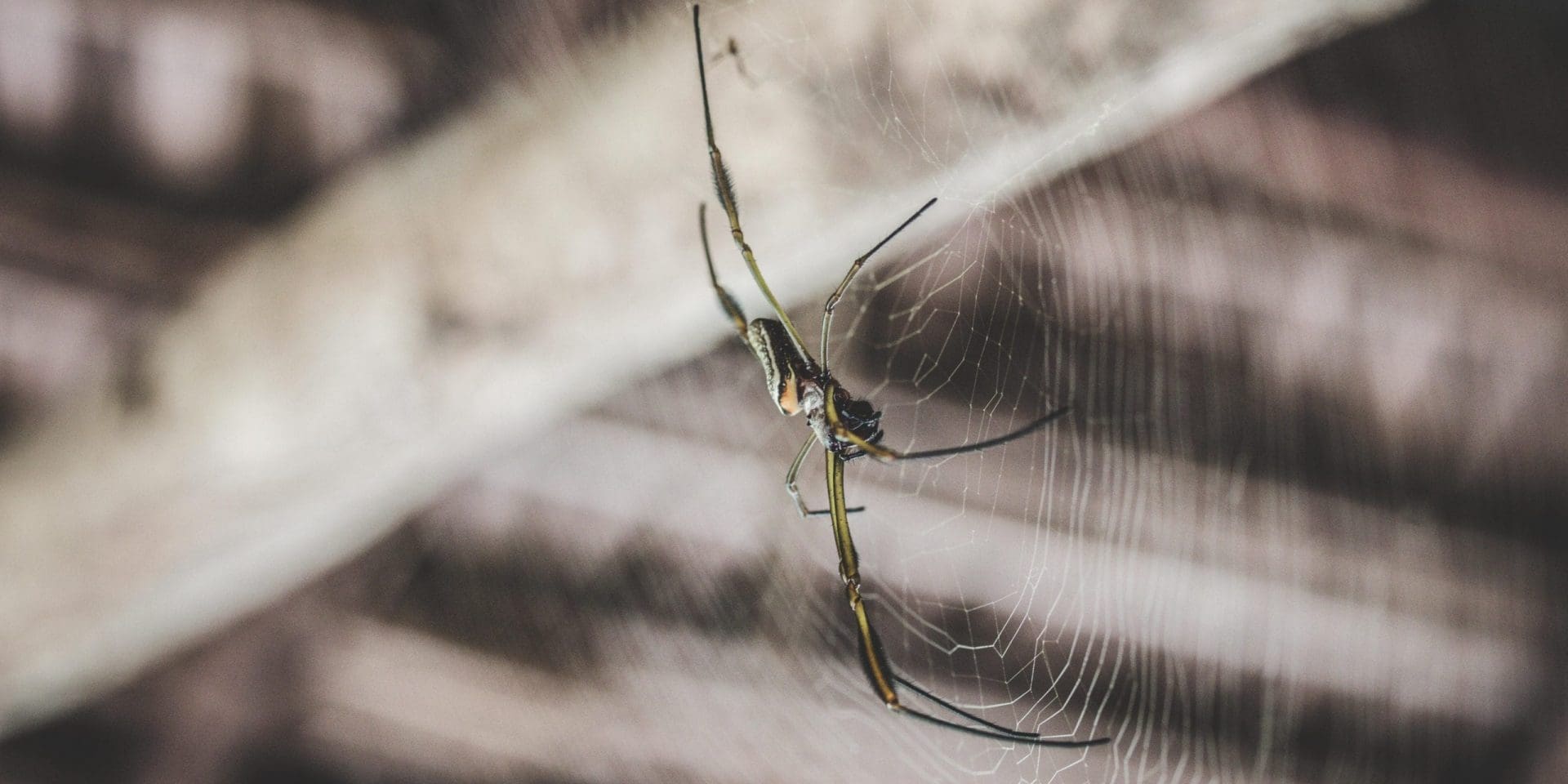Q:
“Did Noah really bring insects on the Ark, and how is this possible? Cause there are millions of kinds of bugs. Did we really need stink bugs, spiders and mosquitoes! I guess the Bible does say “every creeping thing”.
Linda D.
This is a great question—which is actually a whole series of questions. So, let’s take each in turn.
Did Noah really bring insects on the Ark?
Regarding the various kinds of lifeforms that were on board the Ark, Genesis 6:19-20 informs us: “And of every living thing of all flesh, you shall bring two of every sort into the ark to keep them alive with you. They shall be male and female. Of the birds according to their kinds, and of the animals according to their kinds, of every creeping thing of the ground, according to its kind, two of every sort shall come in to you to keep them alive.” Assuming insects are indeed a part of this list then where might they fit? As you pointed out, the obvious choice is “every creeping thing of the ground”. But consider that not all insects are ground creepers. Some are flyers and others are aquatic. Of course, no aquatic creatures were obligate onboard passengers on the Ark but where might the flying insects fit on this list? Interestingly, the word that is typically translated bird in the above passage (Hebrew: ‘ôp̄ – also in Genesis 1:20, 21) is more literally “flying creature” and applies to more than just birds such as bats. Thus, insects could be a part of “every creeping thing of the ground” as well as the “birds/flying creatures”.
Of course, just because insects could have been included as a part of the creatures of the ground and air, doesn’t necessarily mean that they were included. In fact, several creation scientists believe that they were not obligate passengers. Below this article I have provided a comparison chart listing the reasons for each view. So really, whether insects were obligate passengers on the Ark or not is a matter of debate. And since we can’t know with absolute certainty one way or another, we shouldn’t be dogmatic on this issue. But, for the sake of the next part of the question, we will assume that they were.
If so, how is this possible since there are millions of kinds of bugs?
In relation to this question, I first want to dispel an old myth. Noah did not have to go searching for all of the various animals, round them up, and bring them back to the ark. Genesis 7:9 and 7:15 says that they “came to Noah and entered the ark.” In other words, God brought them to him.
Nevertheless, even with God doing the bringing, “millions of kinds of bugs” does seem extremely excessive. And it is. But when you say millions of “kinds” of bugs, what you are really referring to is the millions of “species” of bugs. And this serves to demonstrate another very common misconception which is equating a “species” with a “kind.” But, in most instances, they are not the same thing. “Species” is a term used in the modern classification system which, as many scientists will admit, can be very difficult to define. The Bible, however, uses the term “created kinds.” What is a kind? While there are several factors, “a good rule of thumb is that if two things can breed together, then they are of the same created kind.”[1] As an example, consider dogs. Dogs “can easily breed with one another, whether wolves, dingoes, coyotes, or domestic dogs. When dogs breed together you get dogs; so, there is a dog kind.”[2] It’s the same with cats. Lions, tigers, cougars, bobcats, and even domesticated house cats can all breed and therefore all belong to the cat kind.
When God initially created, He didn’t create all the millions and billions of “species” of animals we have today. Rather, He created kinds (the dog kind for example) with massive gene pools able to produce all sorts of types of offspring (e.g. wolves, dingoes, coyotes, etc.). It is this concept that is vitally important to understanding how all of the animals could fit onto the Ark because Noah didn’t have to take all the different species of animals we have today but only their representative kinds (dog kind, cat kind, horse kind, etc.).[3] This drastically reduces the amount of animal life on board the Ark—including the insects if they were present.
If you want to see some of the specific estimations regarding how many animal kinds were on board the Ark I’ve included those below. Admittedly, none of these calculations include insects as a part of God’s obligate passenger list, however, due to their extremely small size, even if there were say a million individuals, they would have made only a small footprint. And if God did indeed include insects on board then this leads us to the next question.
Did we really need stink bugs, spiders, and mosquitos?
First off, it is important to remember that Creation is in a fallen state. None of the destructive and unpleasant behaviour we observe in nature today is a part of God’s original design. Only good can come from God and He created everything absolutely perfect (even stink bugs, spiders, and mosquitos!). But it was man’s sin (Genesis 3) that brought about the curse upon creation. Hence, thorns, thistles, suffering, bloodshed, disease, and death.
Of course, living in our current fallen state it’s hard to imagine everything as very good. For instance, what good purpose could mosquitos possibly serve? In their current state they are pests. And they spread deadly diseases like malaria, yellow fever, and Zika. But did you know that mosquitos are excellent pollinators? It’s true! “They largely feed on nectar and spread pollen from plant to plant. And not all mosquitos feed on blood. Males survive exclusively on plants and microbes. It is the females in some species that suck blood to get proteins for reproduction.”[4] Before the Fall mosquitos (as well as stink bugs and spiders and all things) were “very good”.
But more to your question, what about at the time of the Flood? Did God save creatures with such pestilent and destructive habits? Since this would be inharmonious with God’s plan to preserve and reestablish the human/animal population afterword, the answer to that would have to be no. Thus, God could have simply denied entry to these kinds of creatures. But it is also important to keep in mind that because the Flood occurred only about 1600 years after Creation, many of these destructive features we now see may have not yet had a chance to develop. In fact, many of the harmful features we see in the animals could be rather recent developments. Indeed, “Some examples of other types of parasitism have been observed to have only developed in the last 200 years. Vampire finches and oxpeckers, for example, have become opportunistic sanguinivores (bloodsuckers) probably quite rapidly—only in the last few hundred years. Some tribes of chimpanzees and bonobos have been found to transition from herbivores or insectivores to carnivores…even more recently. The point is that to look at an animal today and state that the animal kinds coming from the Ark had the same behavior, diet, life cycle, and so on, may not be (and probably isn’t) accurate.”[5]
Final Considerations
So, whether insects were on board the Ark as obligate passages or not we cannot be 100% sure. But if they were not onboard then an obvious question to ask is how did they survive the Flood? Actually, many types of insects are extremely resilient and could have survived on any floating vegetation and other debris. In fact, “Many insects lay their eggs in the branches of trees or woody plants. Some insects also have aquatic larval or nymph stages (mosquitos being one of them) that may have been able to survive in the floodwaters. Some aquatic insect larval stages are over a year long, and some nymph stages are two to three years long. Floating vegetation could have provided a ready food source for many of them; and insects can also survive long periods without food by going dormant, further enhancing their survivability chances outside the Ark.”[6] (This could explain how any insects which had already developed destructive and pestiferous habits before the time of the Flood survived.) That being said, there are the more delicate types of insects (such as butterflies, moths, and bees) that seemingly wouldn’t have been able to survive outside the Ark.
Of course, whether insects were a part of God’s obligate passenger list or not, doesn’t negate the possibility that Noah brought some of them on board as food for the animals or as pollinators for any vegetation he was growing. In any case, we still have insects today, so they obviously survived the Flood.
I hope that helps, Linda!

Ryan Hembree is a daily co-host, speaker, and writer of Bible Discovery. He also hosts a YouTube channel that shows the unity of the Bible and how science and Scripture fit together. Ryan also has an honorary Masters of Ministry in Creation Science from Phoenix University of Theology.
In support of the view that insects were not a part of God’s obligate passenger list, Dr. Jonathan Sarfati, provides several reasons:
Arguments Against:
- All the animals taken on the Ark are described as basar, “flesh”. This is relevant to the nature of insects, because God’s object was to save all living land creatures (and wipe out all ‘flesh’ not on the Ark). But when it comes to specific words for the obligate passengers in the animal kingdom, insects are not included. If they are not included, it would seem that they were not regarded as part of the nephesh chayyāy (Hebrew for “living creatures”) that had to be saved. This is possibly because insects were small enough to survive on floating rafts, for example.
- Basar is qualified by the phrase asher bo ruach chayyim, “which has in it the spirit of lives” (Genesis 6:17, 7:22). This additional phrase is never used of invertebrates.
- We see later in the Flood account that all life forms outside the Ark that breath through the nostrils perished (Genesis 7:22). Insects and arachnids do not breath through the nostrils so were not considered nephesh chayyāy (living creatures) that needed to be saved as obligate passengers on the Ark. Instead they. Take oxygen through holes in in their abdomen (spiracles) via tiny tubes (tracheae).
- “The life (nephesh) of the animal is the blood of it” (Leviticus 17:11, 14, Deuteronomy 12:23; Genesis 9:4). In the biblical and everyday sense, invertebrates do not have blood (Heb. dam). However, they do have hemolymph liquid in their bodies, which is analogous to both blood and the interstitial fluid that surrounds vertebrate cells.
- Flying things (Hebrew ‘ôph) are known to include insects. But the phrase “living creature” (nephesh chayyāy) is not applied to them. In Genesis 7:14 kol ha’ôph (every flyer) is defined (through apposition) as kol tsippor kol kanaph (every bird every wing, i.e. every bird of every sort). This phrase definitely excludes insects. Compare Ezekiel 17:23, where “birds of every kind” are described as nesting, and Deuteronomy 4:17 and Psalm 148:10.
- Insects apparently do not have a complex enough brain to register a stimulus as ‘pain’: Some insects normally show no signs of painful experience at all. A dragonfly, for example, may eat much of its own abdomen if its tail end is brought into the mouthparts. Removal of part of the abdomen of a honeybee does not stop the animal’s feeding. If the head of a blowfly (Phormia) is cut off, it nevertheless stretches its tubular feeding organ (proboscis) and begins to suck if its chemoreceptors (labellae) are brought in touch with a sugar solution; the ingested solution simply flows out of the severed neck ([7]),[8]
- The creatures that were taken on the Ark boarded in pairs (Genesis 7:15) which doesn’t seem to describe the behavioural patterns of insects; they tend to swarm, and several kinds of insects breed in colonies with a single queen.[9]
Despite these issues, there are other creationists who do believe that insects were obligate passengers on board the ark. Troy Lacey puts forward some interesting points:
Arguments For:
- Though disputed, some researchers believe that “every bird of every sort” (Hebrew: kol-hā‘ôp̄) in Genesis 7:14 (KJV, NKJV) is defined (through grammatical symmetry) as “every flying creature of every sort”, or “everything with wings” as in the HCSB and NIV, or “every winged creature” as in the ESV. The phrase or equivalent of “every flying creature” could be taken to include flying insects.
- Also interesting is that the RSV and the ESV of Genesis 7:21 translate the Hebrew term šereṣ as “swarming creatures” (other translations use the phrase “creeping thing”). This could refer to insects as well as amphibians and lizards. The Hebrew words for “creeping thing” (šereṣ) and “creeps” (Hebrew: šrṣ) are different from the words used in Genesis 7:14 (Hebrew: remeš and rōmēs respectively), but they appear to be used interchangeably in some passages (e.g., Genesis 1:20–21; Leviticus 11:41–46).
- But if the meaning of remeš (creeping or moving things) in verses 6:20, 7:8, 14, 8:17, 19 encompasses insects and small land animals, as the context of the creation narrative may suggest (Genesis 1:20–25), then the meaning of the Hebrew phrase kol-bāśār may also encompass insects. The phrase kol-bāśār may be used as a synecdoche, so one should not draw the conclusion that insects have flesh, even if they are included in the phrase. See also Genesis 7:21 where šereṣ is also encompassed by the phrase kol-bāśā Hebrew dictionaries and lexica are in near unanimous agreement that the meaning of šereṣ can encompass insects. Notably, Leviticus 11:21 (NIV) mentions “swarming winged things” and then lists several of these creatures, some of which are varieties of insects, although they are set apart from other creatures. So, Leviticus includes at least some insects in the category of swarming things.[10]
I won’t pretend that this is a simple question to answer. It’s not. On the contrary, it is a very complex and time consuming endeavour to identify each and every animal kind which is why a whole scientific field of study (called baraminology[11]) has been established and devoted to such research. Nevertheless, scientists and researchers have been able to make an educated estimation about how many animals were on the ark. Actually, in 1996, researcher John Woodmorappe, in order to demonstrate that space on the ark wasn’t a problem, purposely inflated the figures to a maximum estimation and he also used the smaller-sized ark (based upon the shorter cubit of 18 inches)[12] which would have made the ark 450 ft x 75 ft x 45 ft with a total volume of 1.52 million cubic feet.[13] What he determined was that there were under 8,000 kinds and about 16,000 (15,745) individuals maximum which would’ve taken up a mere 46.8% of the ark’s total space.[14] But remember, these numbers were purposely inflated. So, what would a more realistic number be?
According to the Answers in Genesis life-size Ark Encounter exhibit, which is based upon the latest research, there were about 1,400 kinds which translates to about 6,700 individuals on the ark.[15] However, even here there were some purposeful inflations to avoid any accusations of lowballing. As AiG themselves observe: “The actual [number] is likely less than 3,200 creatures.”[16]
[1] Dr. Georgia Purdom and Bodie Hodge, What Are “Kinds” in Genesis, The New Answers Book 3, 40
[2] Ibid.
[3] In fact, many of the species we have today didn’t exist at the time of the Flood since they are the result of thousands of years of variation within the created kind (what scientists today call “speciation”).
[4] Ken Ham, Mosquitos—Are They Very Good?
https://answersingenesis.org/media/audio/answers-with-ken-ham/volume-124/mosquitos-very-good/
[5] Troy Lacey, Were Insects on the Ark?, https://answersingenesis.org/noahs-ark/were-insects-on-the-ark/
[6] Ibid.
[7] Dijkgraaf, S. Et al., ‘Mechanoreception’, Encyclopedia Britannica Online, 2013
[8] Jonathan Sarfati, The Genesis Account, 247-248
[9] Troy Lacey, Were Insects on the Ark?, https://answersingenesis.org/noahs-ark/were-insects-on-the-ark/
[10] Ibid.
[11] Baraminology comes from two Hebrew words: Bara meaning “create” and min meaning “kind”. So Baraminology is the study of the created kinds.
[12] Noah probably used the older longer cubit of 20.4 inches which would make the Ark longer and bigger (510 feet long).
[13] That is equivalent to more than 340 of our modern transport trailers!
[14] Ken Ham and Bodie Hodge, A Flood of Evidence, 212
[15] Ibid., 217
[16] Ibid.






